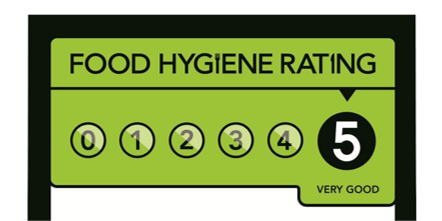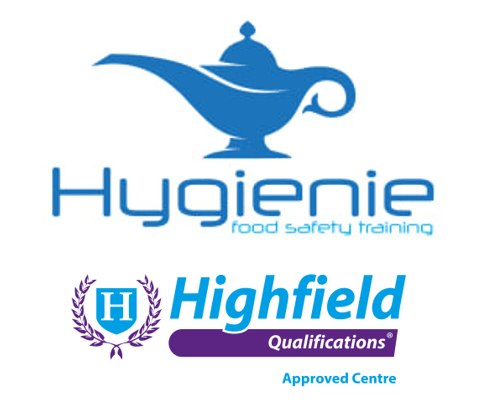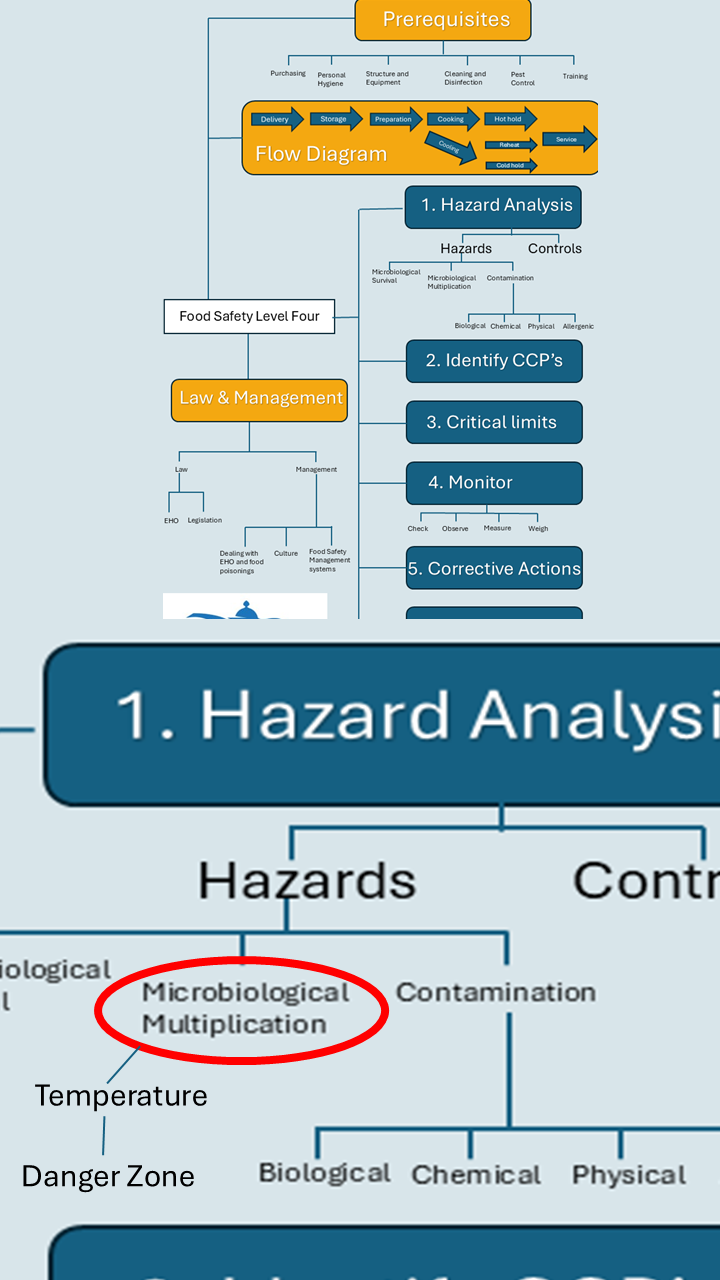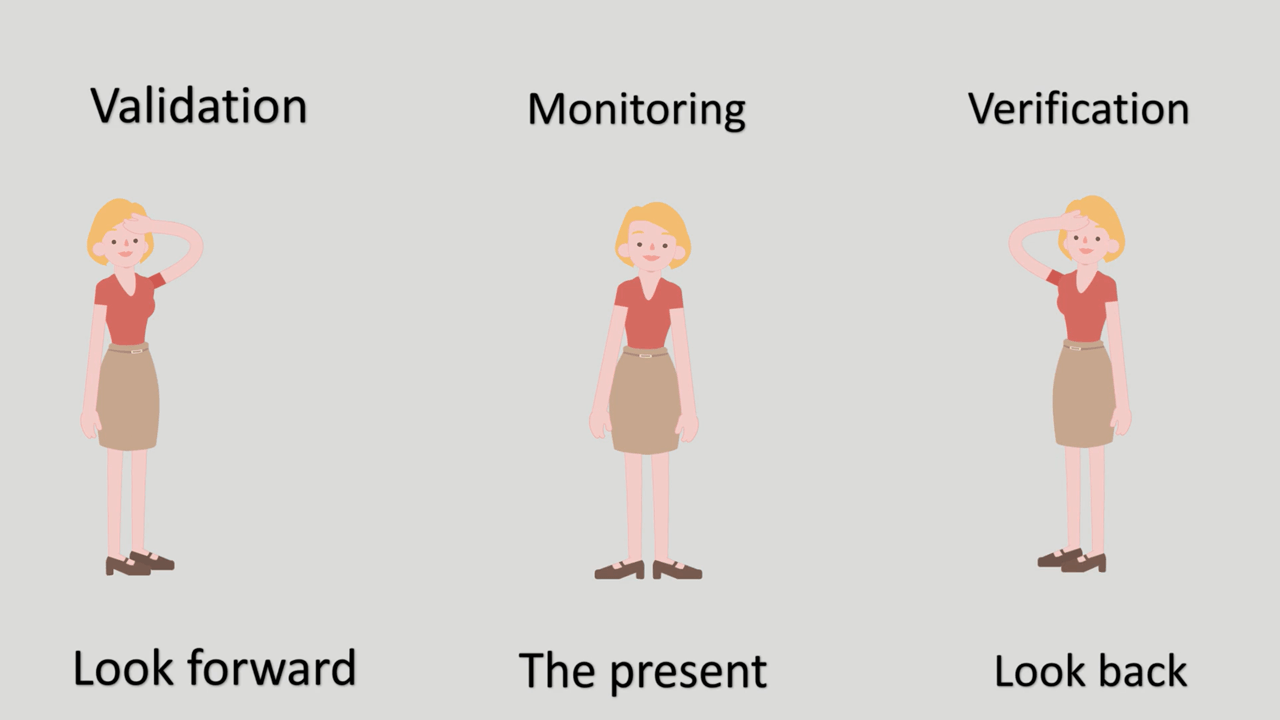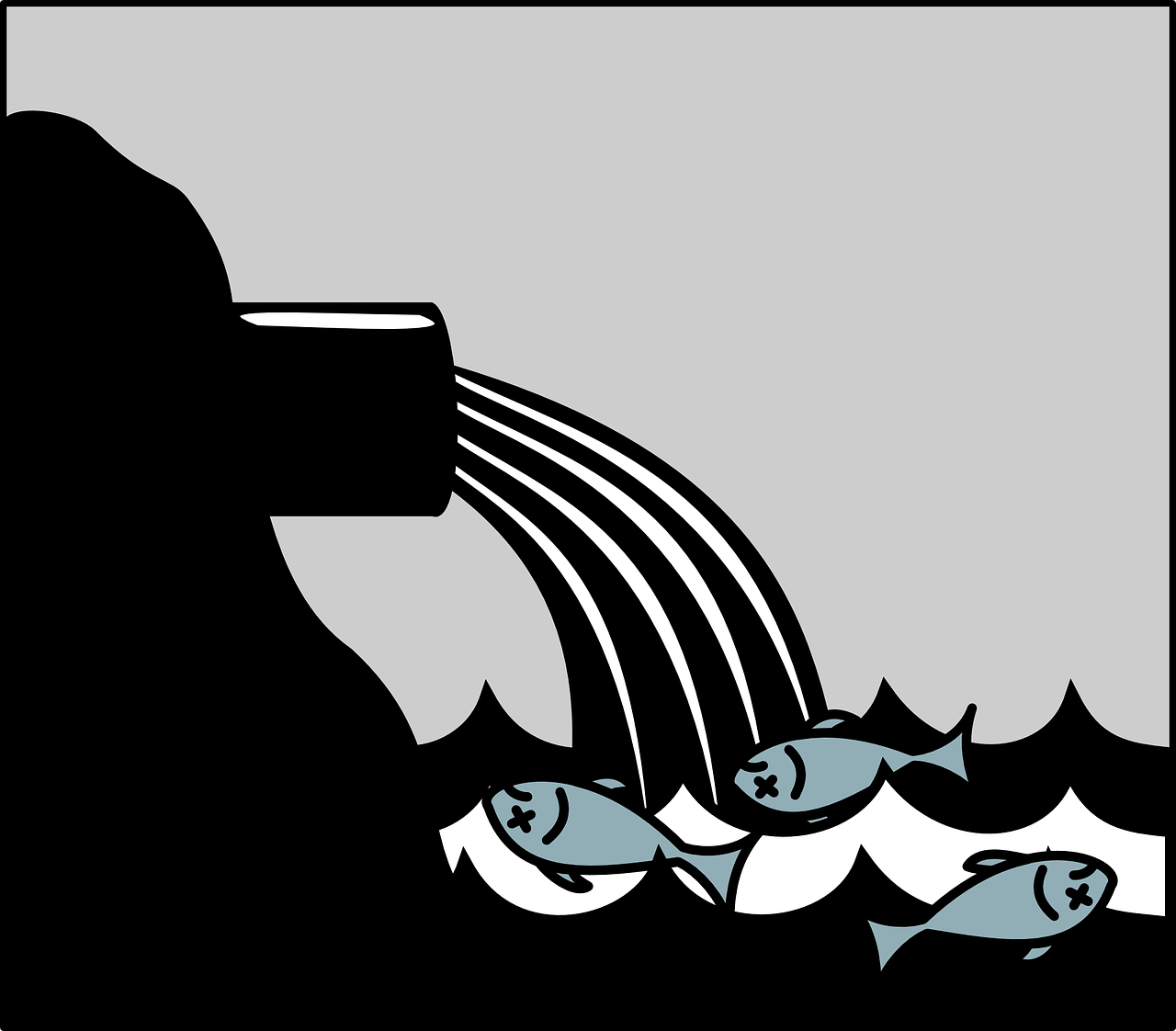How EHO calculate your scores on the doors.
And how to estimate your EHO score for yourself
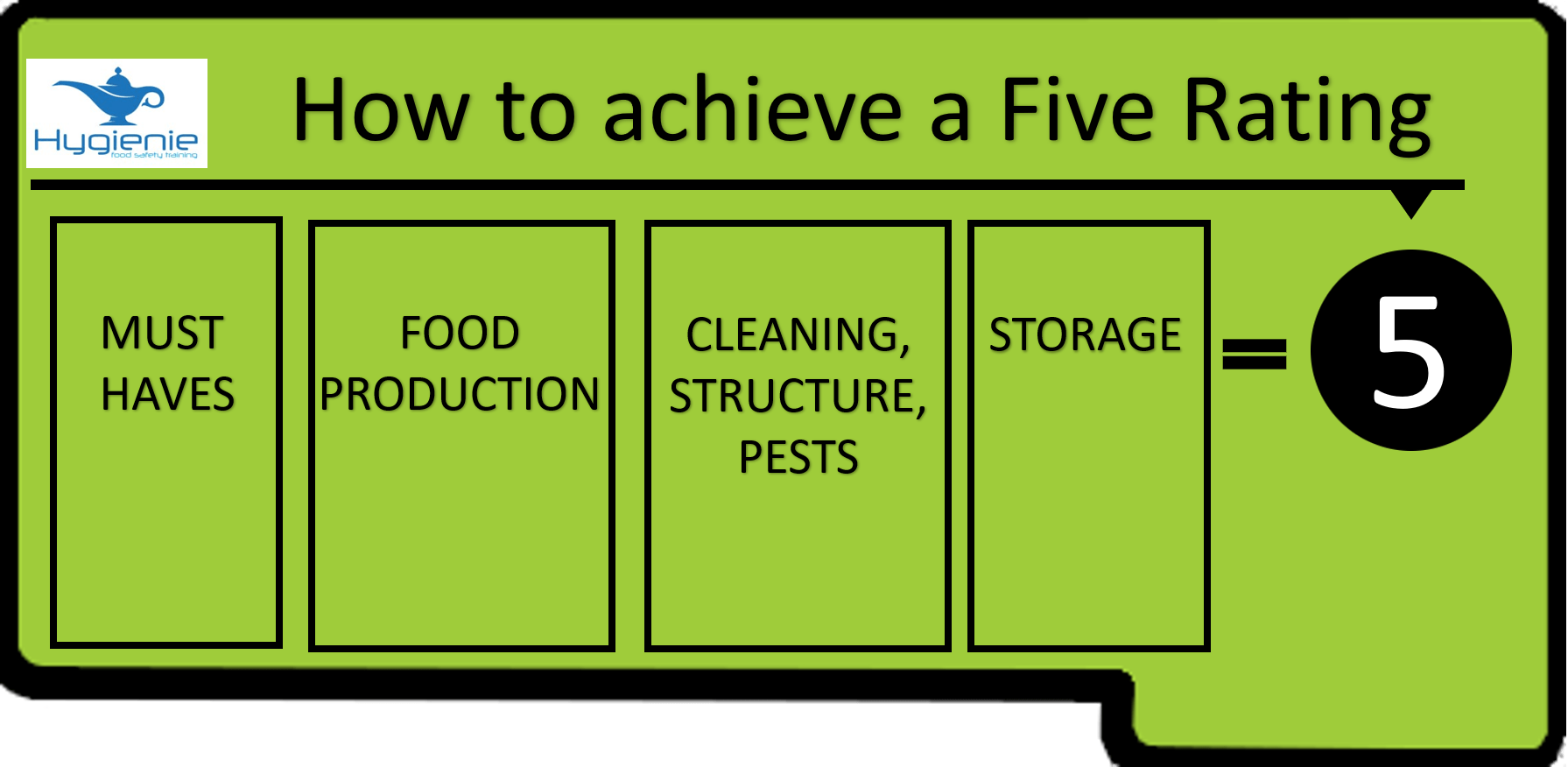
Your rating
The following is a brief overview on how EHO work out your scores on doors, officially called the food hygiene rating system.
EHO use the system to rate your premises from 0 to five; with five being ‘very good’, down to zero, which means ‘urgent improvement required’.
You might imagine sites rated 1, or 2, would be dirty, possibly with pest infestation. Poor personal hygiene, mouldy food, lack of hand washing. Perhaps poor structure with dirty, crumbling walls?
They may well be, but not necessarily, as I’ll explain in this blog.
The scheme applies to England, Wales, and Northern Ireland. There is a different scheme in Scotland (Pass or Improvement required).
The standards checked will be similar, but how the score is calculated will be different.
It is a legal requirement to display your rating in Wales, but not, currently in England.
This article will help you understand how scores are calculated. It will explain why many sites receive low ratings, and this knowledge will help ensure your scores remain high.
You could even use this information to develop your own expertise in the food hygiene ratings.
The greater your understanding of how your scores are calculated; the better you can prepare for inspections.
EHO visit
When EHO complete your inspection, they’ll make note of everything that’s wrong. Hopefully, this will be a very short list, or empty page for you!
Typical things they might mention are:
- Out of date food.
- Dirty floor beneath cooking equipment.
- Gaps in temperature records.
They will now put their findings into one of three sections:
1. FOOD HYGIENE AND SAFETY (out of date food would be scored here)
2. STRUCTURAL COMPLIANCE (dirty floor score here)
3. CONFIDENCE IN MANAGEMENT (gaps in temperature records scored here).
Each of these three sections are given a sub score, and these sub scores are added together to calculate your final rating.
The important thing to remember is this:
If any of these sections (hygiene, structure, and confidence in management) have a poor score, your overall rating will be low.
Think of it like you’re MOT. If your brakes are faulty, you wouldn’t expect to pass the MOT, even if everything else was perfect.
Three sub sections
Here’s more detail on those three sections, and some of the issues EHO will group into each one.
1. FOOD HYGIENE AND SAFETY
Here, EHO score your practices; the things you do.
It will include things like cross contamination, cooling procedures, fridge temperatures, dates, labelling and personal hygiene.
2. STRUCTURAL COMPLIANCE
Here, EHO score your structure, your cleaning, and any pest issues.
3. CONFIDENCE IN MANAGEMENT
Here, EHO rate your knowledge, your paperwork, and how confident they are that, moving forward, standards will be maintained or improved.New Paragraph
Calculating a Five Rating
EHO give a sub-score to each of the sections, for example:
FOOD HYGIENE AND SAFETY = 0
STRUCTURAL COMPLIANCE = 0
CONFIDENCE IN MANAGEMENT = 0
The above example is the perfect score. Each section has scored a zero, meaning there is nothing wrong, no issues found..
Roughly speaking, each section is scored as 0, 5, 10, 15, 20, or 25.
There is no 15 in the confidence in management section, and scores in that section go up to 30.
A score of 15 in any of the sections will result in an overall rating of two.
Many people will Google ‘scores on the doors’ to find the rating for a particular site.
The official, more reliable food standards agency website can be found by searching FSA Food hygiene ratings.
Whichever site you use, you enter the name of the site, the area and press ‘search’.
For example, see below. Here, I used the ‘scores on the doors’ site; I searched for ‘Red Lion’ and ‘Norwich’, and found these results:
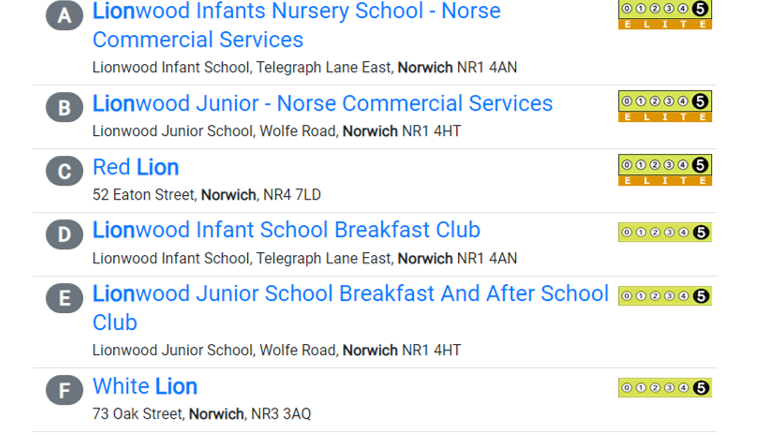
If I then click on F: White Lion, I can find more details of the visit:
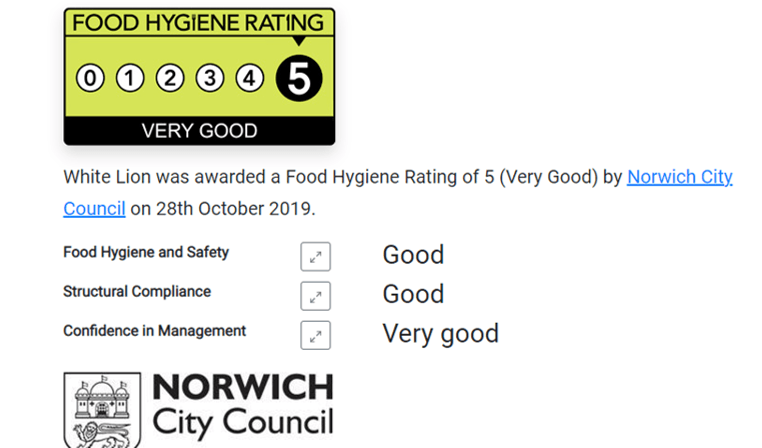
The official Food Standards agency results can be accessed here:
This is a more reliable site, with no annoying adverts
As you can see, numbers are not used for the sub sections, but rather a written description.
The descriptions correspond to our numerical scores, for example:
‘VERY GOOD’ = 0
‘GOOD’ = 5
‘GENERALLY SATISFACTORY’ = 10
‘IMPROVEMENT NECESSARY’ = 15
‘MAJOR IMPROVEMENT NECESSARY’ = 20
‘URGENT IMPROVEMENT NECESSARY’ = 25
Therefore, the scores for the White Lion example above would be:
FOOD HYGIENE AND SAFETY = 5 (Good)
STRUCTURAL COMPLIANCE = 5 (Good)
CONFIDENCE IN MANAGEMENT = 0 (Very good)
As we can see here, the standards don’t have to be perfect to achieve a five, it allows for non-critical issues.
We don’t know exactly what issues EHO found at the White Lion. However, the following points would have resulted in a Five:
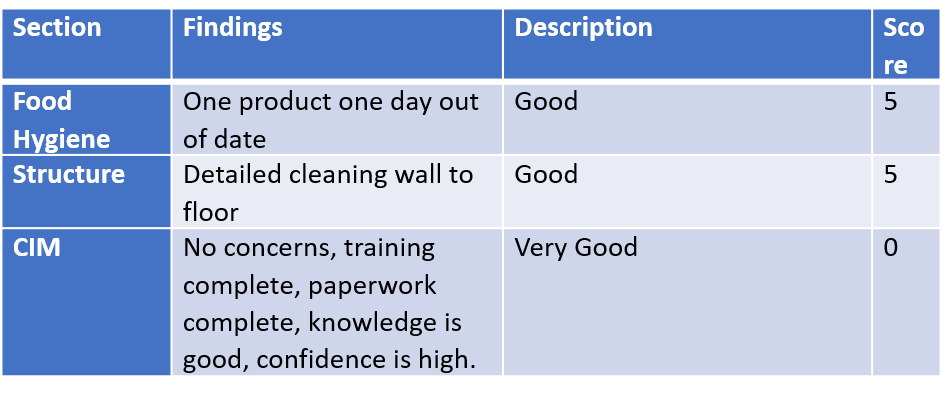
Calculating a Four Rating.
If you score a 10 on any section, your maximum score is four.
Example:

Two tens and a zero would also be a Four rating.
Calculating a Three rating.
Two tens and a five will reduce the overall rating to three.
Example:

For guidance on which score to select, EHO refer to the brand standards.
This is basically a scoring guidance for inspectors.
The criteria for selecting a structure score of 10 (not critical to safety, but could become so), is taken from the brand standards.
If you want to become a real expert, you can download the brand standards yourself.
Calculating a Two rating.
A 15 on any section reduces the overall score to a two:
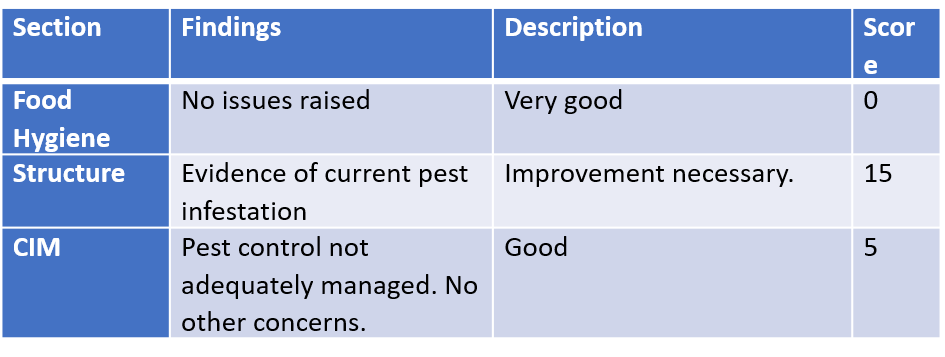
Calculating a One rating.
CALCULATING A ONE RATING
An overall score of 45 (i.e. 15 on all three sections) will result in a one rating.
However, if you score a 20 on any section, this could also result in a one.
Example:
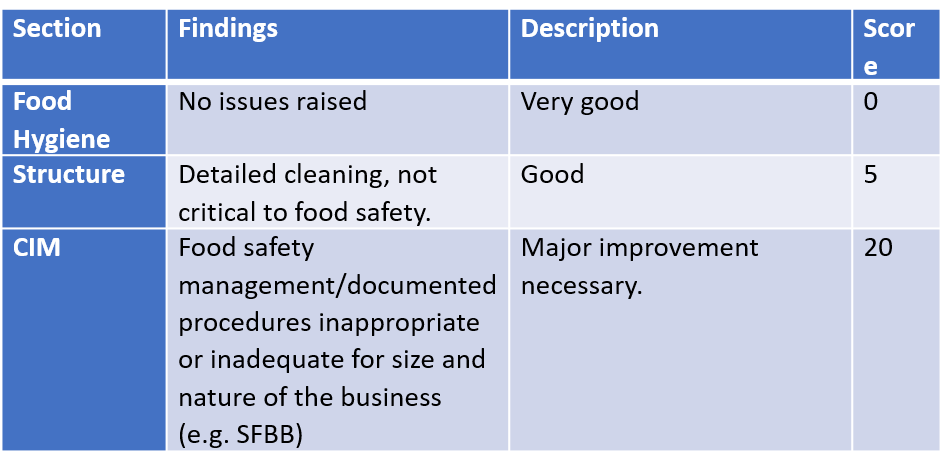
As you can see, a site could receive a ‘one’ rating simply because they don’t have a written food safety management system. Even though standards were otherwise good.
Now, many EHO will argue this isn’t the case. They wouldn’t award a site a one rating purely on lacking paperwork. It’s great to hear of EHO taking an ‘holistic view’ of standards. However, in my personal experience this isn’t always the case.
And, if it doesn’t, how would they explain the rating below?
This is taken from the official FSA website I discussed above.
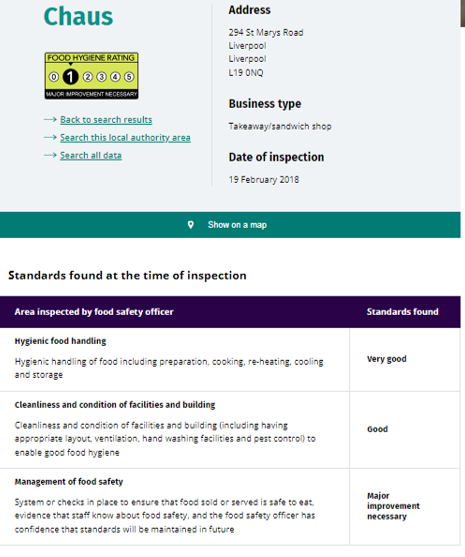
Calculating a Zero rating.
An overall score of 50 or more results in a zero rating.
If a site has scored a zero, we can be fairly sure the site DOES have poor standards.
Summary
Many businesses have very low ratings because of one or two major issues.
The following are likely to reduce the overall rating to TWO, even if everything else is perfect:
No hot water
Pest infestation
Some of the controls necessary to prevent cross contamination not in place or implemented.
The following could reduce the overall rating to ONE, even if everything else is perfect:
No documented food safety management system in place.
Please remember this; you can download a FREE food safety management system from the Food standards agency.
There are information packs available for various business types.
Ensure you work through the system, explaining how you keep food safe. You can find more advice in our blog ‘how to get a five rating from EHO.
Additional food safety concerns resulting in a one would include:
Many of the controls necessary to prevent cross contamination not in place.
Hygienie training courses will include advice on maintaining suitable cross contamination controls.
You can also read our blog on achieving a five rating for my information.
